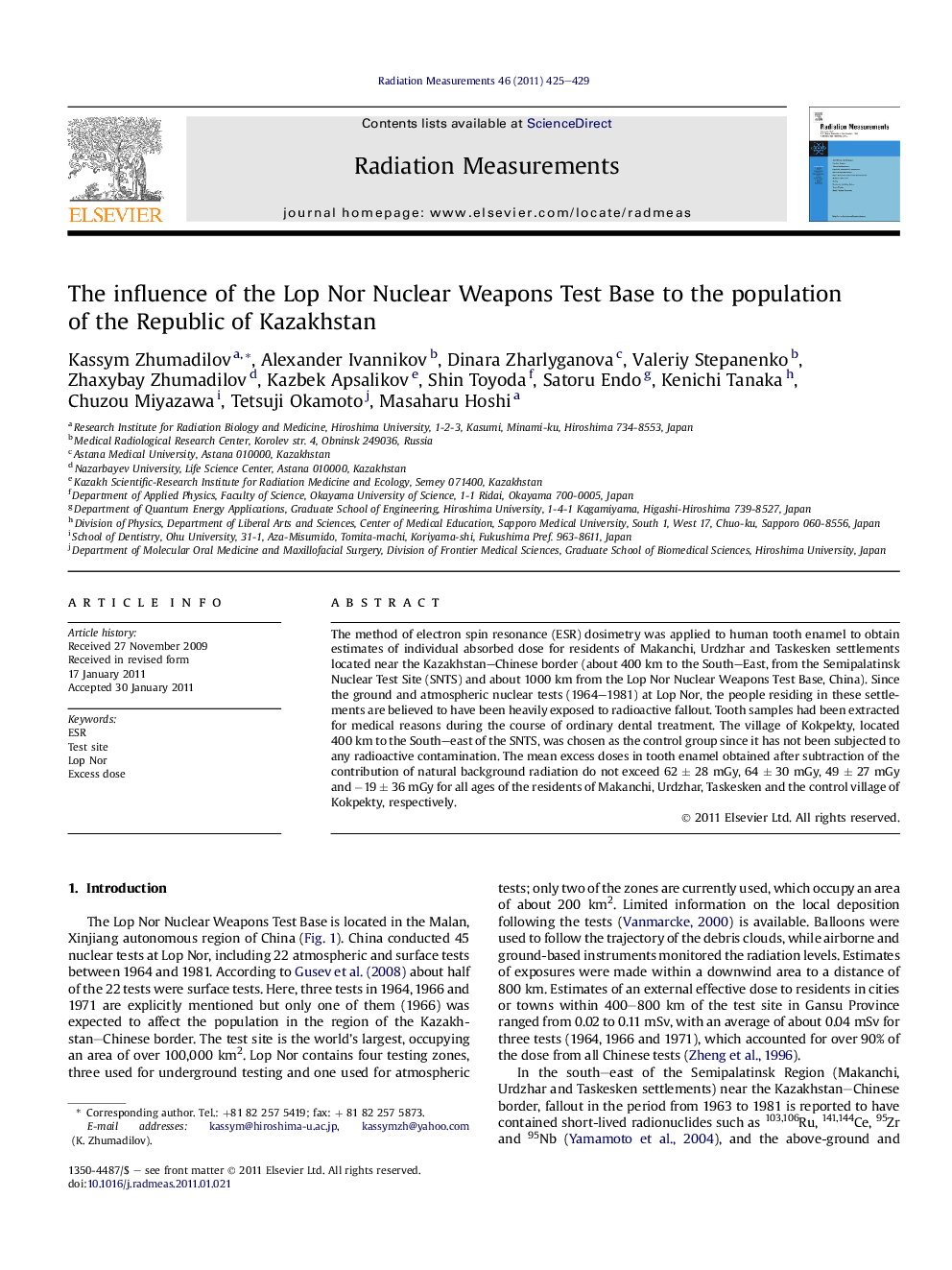| Article ID | Journal | Published Year | Pages | File Type |
|---|---|---|---|---|
| 1881018 | Radiation Measurements | 2011 | 5 Pages |
The method of electron spin resonance (ESR) dosimetry was applied to human tooth enamel to obtain estimates of individual absorbed dose for residents of Makanchi, Urdzhar and Taskesken settlements located near the Kazakhstan–Chinese border (about 400 km to the South–East, from the Semipalatinsk Nuclear Test Site (SNTS) and about 1000 km from the Lop Nor Nuclear Weapons Test Base, China). Since the ground and atmospheric nuclear tests (1964–1981) at Lop Nor, the people residing in these settlements are believed to have been heavily exposed to radioactive fallout. Tooth samples had been extracted for medical reasons during the course of ordinary dental treatment. The village of Kokpekty, located 400 km to the South–east of the SNTS, was chosen as the control group since it has not been subjected to any radioactive contamination. The mean excess doses in tooth enamel obtained after subtraction of the contribution of natural background radiation do not exceed 62 ± 28 mGy, 64 ± 30 mGy, 49 ± 27 mGy and −19 ± 36 mGy for all ages of the residents of Makanchi, Urdzhar, Taskesken and the control village of Kokpekty, respectively.
